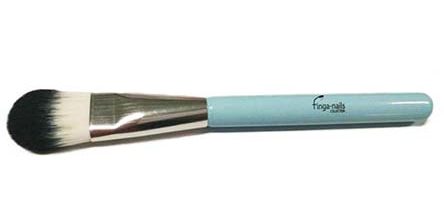
Regularity
How often should you wash your make-up brushes? weekly?,monthly?,or do you NEVER clean your brushes?
Ideally, you should be washing your brushes weekly, but realistically you shouldn’t leave it more than a few weeks between cleaning. A neglected make-up brush is basically a breeding ground for bacteria.
Why clean?
Even with freshly cleansed skin, every time you put a brush to your face you’re transferring bacteria from the skin to the brush. Without proper regular cleansing, your make-up brushes will become a breeding ground for dirt and bacteria, putting your skin at risk of pimples and breakouts. If you do suffer from problem skin then up your brush cleaning regime to help.
How to clean?
Take a tall beaker and fill almost to the top with clean warm water adding a splash of liquid soap or gentle shampoo. Put the brush in the beaker and with quick, sharp up and down movements, let the water spread through the bristles. When the water becomes the colour of tea, change the water and repeat the process until the water is clear. To protect the bristles and shape, try not to bang the bristles too much on the beaker base .
Next
Add a small about of makeup remover to a cup or beaker and put in the freshly cleaned brush. You’ll be amazed to see there is even more makeup still trapped in the bristles.
Finally
To totally clear away any chemicals , fill the beaker with clean warm water and add a teaspoon tip of bi-carb, and with quick, sharp up and down movements, let the water spread through the bristles. Leave the brush to dry naturally in a warm environment. Avoid direct heat such as a radiator as this may affect the glue used to form the brush bristle.

 The Cuticle is the narrow band of skin that surrounds the nail attached to your finger and it protects the root of the nail from bacteria. It’s essential to keep cuticles moisturised as they’re supposed to be soft!
The Cuticle is the narrow band of skin that surrounds the nail attached to your finger and it protects the root of the nail from bacteria. It’s essential to keep cuticles moisturised as they’re supposed to be soft!